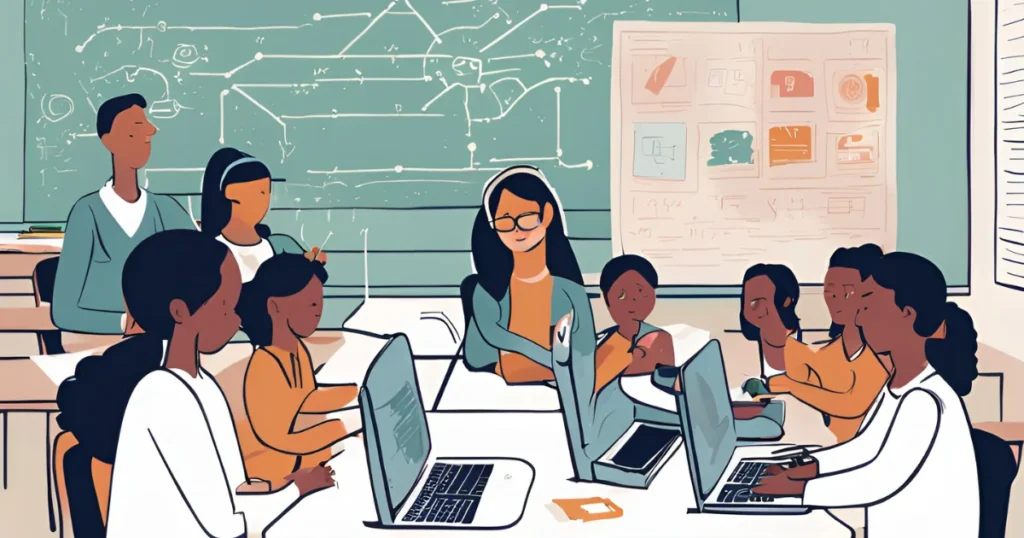Teachers detect ChatGPT-generated content by using a combination of intuition, writing style analysis, and AI detection tools.
Let’s explore how teachers are spotting AI-written content and what tools they use to maintain academic honesty.
Understanding ChatGPT and Its Capabilities
ChatGPT, developed by OpenAI, is a powerful AI model designed to generate human-like text. It can summarize, answer questions, and even write code, all based on the input it receives.
For students, it has become a quick and easy way to complete assignments. But while AI helps students, it also presents new challenges for teachers who need to uphold academic integrity.
Why Detecting AI-Generated Content is Challenging

The ability of ChatGPT to mimic natural language makes it difficult to distinguish its output from human writing immediately.
The model is trained on vast amounts of text data, making it adept at generating coherent, contextually relevant responses.
However, teachers and AI tools have begun to identify patterns that reveal the use of AI in student submissions.
One key challenge is that AI doesn’t have personal context. ChatGPT often generates text that is technically correct but lacks the personal touch or unique perspectives typical of student work. This becomes evident in assignments that require subjective analysis or creativity, where the AI may fall short.
Methods Teachers Use to Detect ChatGPT-Written Work

Human Intuition and Writing Style Analysis
Teachers are familiar with their students’ writing abilities and styles. A sudden improvement in quality or a shift in tone and vocabulary can be a red flag. Teachers often notice inconsistencies in student work, such as elevated language or an unusually polished structure that doesn’t match previous performance.
Additionally, ChatGPT can produce overly generic text. When tasked with specific, niche topics, the AI may use broader, more general language, which can stand out in assignments that require detailed personal reflection or depth of understanding.
AI Detection Software
Plagiarism detection tools like Turnitin and GPTZero are adapting to identify AI-generated content. These tools analyze patterns in the text, comparing them with known AI outputs to detect deviations from human writing. For example, GPTZero uses machine learning algorithms to compare submitted work with millions of documents to identify content likely generated by AI.
However, AI detection tools are not foolproof. The technology is still evolving, and while it can spot many AI-generated texts, it may miss content that students carefully edit after using ChatGPT.
Looking for Repetitive Phrasing
Teachers have also noted that AI tends to use specific phrases repeatedly, especially in longer assignments. AI-generated content often needs more variety in sentence structure and expression than human writing naturally has. This makes it easier for educators to detect.
The Role of Technology: Plagiarism Detection Tools and Watermarking
AI detection software has become an indispensable tool for educators to combat academic dishonesty. Programs like Turnitin and GPTZero are specifically designed to flag content produced by AI.
These tools evaluate the writing’s style, vocabulary, and complexity, comparing it with extensive databases of known AI and human-written content.
Additionally, OpenAI has hinted at exploring watermarking techniques for ChatGPT, which would make it easier to identify AI-generated text. This is a proactive step toward addressing the growing concerns over AI use in education.
Creative Approaches to Avoiding AI Misuse in Education
As technology continues to evolve, teachers are developing creative strategies to prevent misuse while embracing AI’s potential benefits. Here are some non-technological methods being implemented:
In-Class Supervised Writing
Many educators have returned to requiring in-class essays or assignments written under supervision to eliminate the possibility of using AI.
Complex Writing Prompts
Teachers are now creating more sophisticated, open-ended prompts that challenge students to provide critical reasoning rather than simple regurgitation. For instance, comparing two complex topics across different eras is harder for AI to manage than a straightforward question.
Scaffolded Assignments
By asking students to submit drafts and show their progress over time, teachers make it more difficult for students to rely entirely on AI for their final submissions.
Future-Proofing Education
Rather than banning AI entirely, educators are learning to incorporate AI into the curriculum constructively. Tools like ChatGPT can support personalized learning, help students with drafts, and encourage the exploration of new topics. Modeling the productive use of AI teaches students how to use technology responsibly while reinforcing the importance of original thought.
Conclusion
In conclusion, teachers are leveraging both their experience and advanced AI detection tools to maintain academic integrity in the age of ChatGPT. While the rise of AI in education presents challenges, it also offers opportunities for creative adaptation. By combining technological solutions with thoughtful pedagogy, educators can ensure that AI enhances learning without compromising authenticity.
FAQs
Can teachers detect ChatGPT with the naked eye?
Yes, experienced teachers can detect shifts in writing style or unusual quality jumps that signal AI use.
Are AI detection tools reliable?
AI detection tools like GPTZero and Turnitin are adequate but not infallible. They can spot patterns typical of AI writing but may miss carefully edited content.
How can students use AI responsibly?
Students should use AI as a tool to aid their learning rather than replace their work. Teachers encourage using AI for brainstorming, drafting, and exploring new ideas while maintaining integrity in final submissions.





